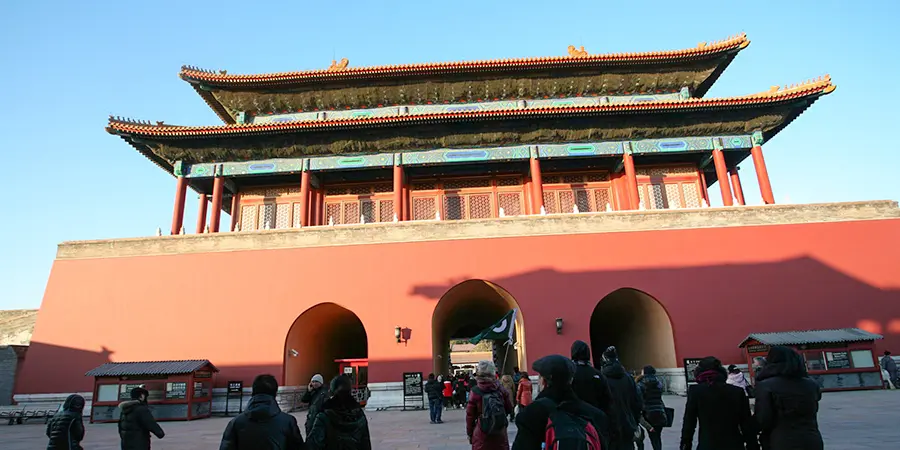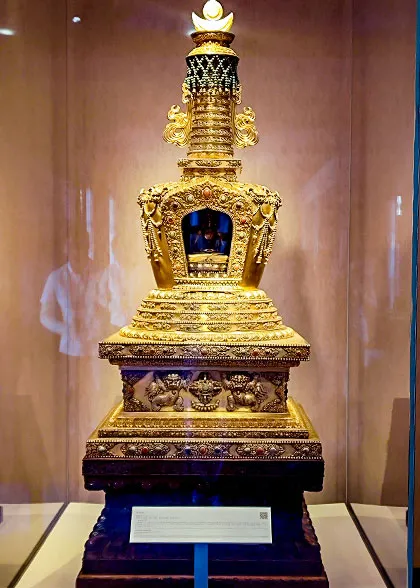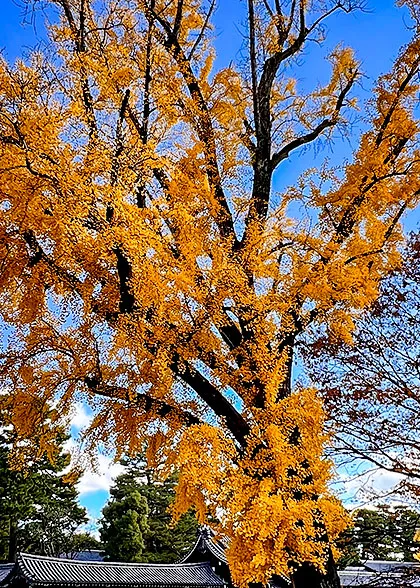West Prosperity Gate (Xihuamen)
The West Prosperity Gate used to be the western entrance of the Forbidden City and now is the only one of its four main gates closed to public access.
 |
| West Prosperity Gate |
What to See at the West Prosperity Gate?
Standing before the gate, you can admire its red rectangular surface, featuring three arched passageways which are square on the outside and rounded within and adorned with 81 gilded studs (9 rows vertically and horizontally). The gate tower on the upper floor boasts a double-eaved hip roof covered in yellow glazed tiles, with a white marble balustrade encircling its base. Historically, this space stored the emperor's armor for military inspections.
Outside the gate stand two weathered white stone steles, each about 4 meters (13 feet) tall, with faded inscriptions. Known as "Dismounting Steles", they bear the phrase "Dismount Here", signaling officials to dismount their horses before entering the gate.
At first glance, the West Prosperity Gate resembles its eastern counterpart. However, look to its sides and you'll discover an extra row of buildings flanking the gate. Despite their ancient appearance, these structures were erected in the 1970s for blocking views from the nearby Beijing Hotel into sensitive government areas. Their ornate lattice windows are purely decorative, with solid walls behind them.
Another notable feature is its placement. Unlike the Meridian Gate and Gate of Divine Prowess, centered along the Forbidden City's southern and northern walls, the West and East Prosperity Gates are positioned closer to the south side. This design was to avoid disturbances to the emperor's and consorts' living quarters in the north sector while preventing interaction between the inner court and the administrative area.
When & Why Built – History of West Prosperity Gate
Constructed in 1420, the West Prosperity Gate has served as one of the palace's main entrances for over six centuries. This gate witnessed a dramatic moment in 1900 when Empress Dowager Cixi (1835-1908) and Emperor Guangxu (1871-1908) fled through it as foreign troops stormed the Forbidden City through the eastern gate.
What was the Gate Used for in Qing Dynasty?
 |
| Longevity Gift for the Empress Dowager |
The gate saw grand celebrations twice: in 1751 for Empress Dowager Chongqing's (1693-1777) 60th birthday, and in 1790 for Emperor Qianlong's (1711-1799) 80th birthday. On these occasions, the gate was lavishly decorated with lanterns, temporary opera stages were erected, and processions would exit here to the western gardens for ceremonies.
The gate's inner area also housed important institutions like the Royal Publishing House in the Hall of Martial Valor and offices of the Imperial Household Department, so officials like royal book editors and craftsmen often passed through here for their work.
What is the Gate Used for Today?
Today, the West Prosperity Gate is reserved for staff access. Though closed to visitors, it could be a place where you can pass by to more easily reach the entrance of the Forbidden City.
West Prosperity Gate Travel Tips
A Shortcut to the Forbidden City's Entrance
 |
| Ginkgo Tree Near the Gate |
How to Get There
To reach the West Prosperity Gate, take the subway Line 1 and get off at Tiananmen West Station (Exit B). From there, walk along Nanchang Street for about 15 minutes.
Autumn Highlight: Golden Ginkgo Trees
Every autumn, the ginkgo trees outside the West Prosperity Gate turn a brilliant gold, creating stunning contrast with the red walls and glazed tiles on clear days. This picturesque scene becomes a popular spot for visitors looking to enjoy and photograph the Forbidden City's autumn scenery. The best time to visit is from late October to early November. To avoid the crowds, consider visiting on a weekday.
- Last updated on Dec. 11, 2025 by Jally Zhang -